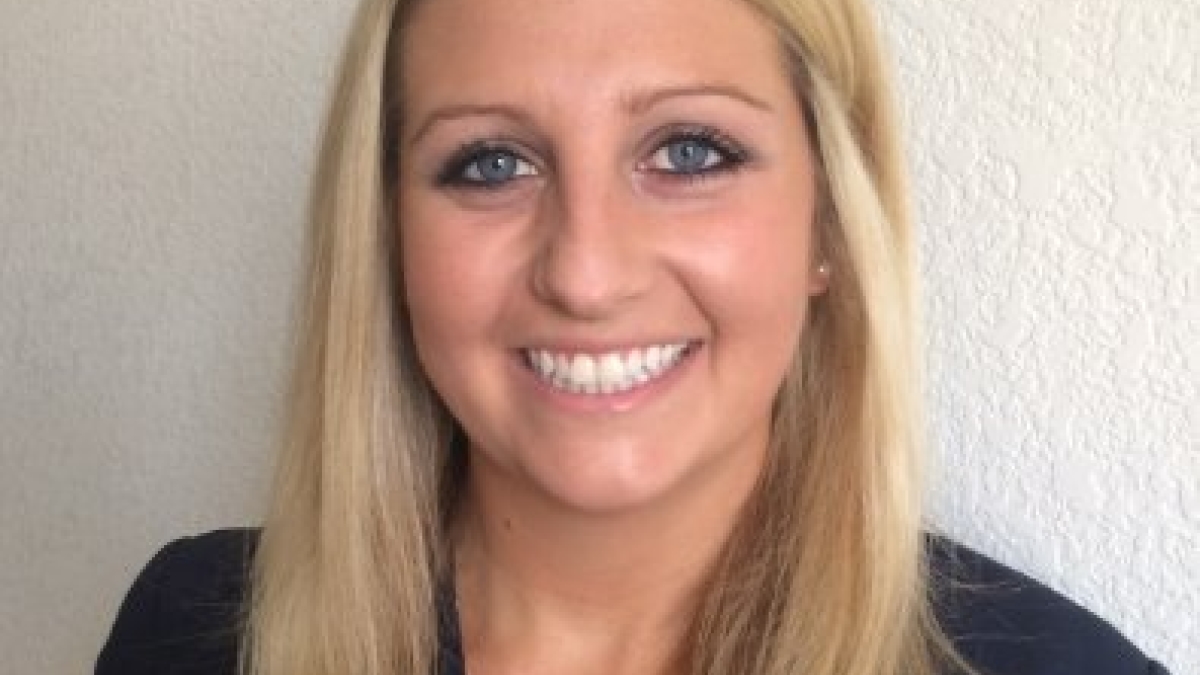ASU law scholars highlight success in classroom, community

The Sandra Day O’Connor College of Law at Arizona State University is honoring two third-year law students with its 2014 Gold ‘n Gavel scholarship. The students are part of the college’s renowned Center for Law, Science & Innovation.
The Gold ‘n Gavel Auction, now in its second year, is designed to raise funds for scholarships and other initiatives at the College of Law. This year’s event takes place Sept. 19 at the Phoenix Art Museum.
The two outstanding students, David Medina and Kellie Manders, exemplify the College of Law’s quest to continue to attract the best and brightest students from around the country, said Douglas Sylvester, dean of the College of Law.
“The second annual Gold ’n Gavel Auction and Reception is an incredible event, as it shows how deeply our alumni and friends care about the Sandra Day O’Connor College of Law and its ability to attract the highest quality of students,” Sylvester said. “We are a great law school that not only is preparing lawyers for tomorrow, but also significantly impacting society and the future of law today. Kellie and David are great examples of the students we recruit, and soon they will be added to the community of alumni of which we are so very proud.”
Coming from Silicon Valley and the world of startups and tech companies, California native Medina had a passion for intellectual property and knew he wanted to pursue a career in patent litigation. He quickly decided the Center for Law, Science & Innovation at ASU was the perfect fit.
“After learning about the center, I was hooked,” Medina said. “I was looking for a law school that would let me combine my interest in technology and engineering with the law. After discovering that ASU Law had small class sizes, lower tuition costs than many other schools, and a deep selection of offerings in intellectual property, I was sold.”
Medina gave up a career in project management at a Silicon Valley startup to pursue his dream of being in the legal field. “I wanted to be the first lawyer in my family,” Medina said.
Manders began considering law school after graduating from the University of Colorado with a bachelor’s degree in psychology and sociology. She also took a medical mission trip to Nepal. Her passion for health and medicine led her to ASU to study the intersection of psychology, health and the law.
“I chose ASU for many reasons; the biggest was all of the programs ASU has to offer,” Manders said. “The Center for Law, Science & Innovation, the various clinics, externship opportunities and class offerings allowed me to explore every area of the law that I am interested in.”
Both Medina and Manders have made the most of their opportunities for practical hands-on training while at the College of Law.
During his second year of law school, Medina completed an externship at the U.S. Court of Appeals for the Federal Circuit in Washington, D.C. After returning, he also spent part of a semester interning at Bowman and Brooke in Phoenix, as part of the local Diversity Legal Writing Program.
Medina said he loved his semester in Washington, D.C., working in Judge Kathleen O’Malley’s chambers and benefiting from learning about legal research, discovering how judges make decisions, and improving his writing skills.
His time at Bowman and Brooke also provided valuable lessons. “Interning with the lawyers there illustrated what it meant to be an advocate,” Medina said.
Most recently, Medina worked as a summer associate at Orrick, Herrington & Sutcliffe LLP, in Silicon Valley, where he also accepted a position after graduation.
Manders took advantage of both an externship with the Maricopa County Attorney’s Office and Phoenix Children’s Hospital. Her experience at Phoenix Children’s Hospital solidified Manders’ desire to pursue a career in health law, which she hopes will ultimately lead to serving as a general counsel for a hospital or health care company.
“At Phoenix Children’s Hospital, I was able to use the knowledge I had gained from my health law classes and apply it to my work,” Manders said. “It was an experience that can never be replaced.”
Manders said she was humbled when she learned she was one of this year’s Gold ‘n Gavel Scholars. Without the financial support she’s received, Manders says she would not have been able to attend law school or would have been forced to miss out on much of what she has experienced.
“I would have been obligated to focus more on paying job opportunities,” Manders said. “I also wouldn’t have had the time to participate in student organizations, law review, research clusters, pro bono groups and volunteer events.”
Medina agreed that scholarships were vital.
“I would not be where I am today without the financial support,” Medina said. “I would not have accomplished nearly what I have in the past two years if I had to split my energy between school and supporting myself.”
Medina, a three-time scholar at the Center for Law, Science & Innovation and a Willard H. Pedrick Scholar, said he was honored to add Gold ‘n Gavel Scholar to his list of accomplishments.
“I am now affiliated with ASU Law’s biggest event of the year,” Medina said. “It has helped change my life.”